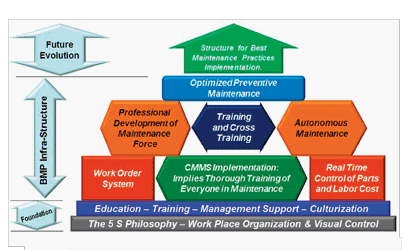
Keeping a facility running smoothly is essential for the success of any business. From office buildings to manufacturing plants, proper maintenance is key to ensuring safety, productivity, and longevity of equipment. In this article, we will explore some best practices for efficient facility maintenance that can help you streamline operations and reduce downtime.
Regular Inspections and Preventative Maintenance
One of the most important aspects of facility maintenance is conducting regular inspections and performing preventative maintenance tasks. By staying ahead of potential issues, you can avoid costly breakdowns and ensure that your equipment is operating at peak efficiency.
Developing a maintenance schedule that includes routine inspections of HVAC systems, electrical systems, plumbing, and other critical components is essential. This allows you to identify and address minor issues before they escalate into major problems.
Implementing a Computerized Maintenance Management System (CMMS)
A Computerized Maintenance Management System (CMMS) is a software solution that helps streamline maintenance operations by tracking work orders, scheduling preventative maintenance tasks, and managing inventory. By implementing a CMMS, you can improve communication between maintenance teams, reduce downtime, and increase efficiency.
With a CMMS in place, you can easily prioritize maintenance tasks, track asset performance, and generate reports to help identify trends and areas for improvement. This allows you to make data-driven decisions that can help optimize maintenance processes and reduce costs.
Training and Development for Maintenance Staff
Investing in training and development for maintenance staff is crucial for ensuring that they have the skills and knowledge to perform their jobs effectively. By providing ongoing training and professional development opportunities, you can help your maintenance team stay current on industry best practices and emerging technologies.
Encouraging certification programs and continuing education can help improve the overall quality of your maintenance team and reduce the likelihood of errors or accidents. Additionally, cross-training employees in different maintenance disciplines can help ensure that there is always someone available to address maintenance issues quickly and efficiently.
Utilizing IoT and Predictive Maintenance
The Internet of Things (IoT) has revolutionized the way facilities can monitor and maintain equipment. By connecting devices and sensors to a network, you can collect real-time data on the performance of critical systems and receive alerts when issues arise.
Implementing predictive maintenance strategies based on IoT data can help you predict when equipment is likely to fail and schedule maintenance proactively. This can help reduce unplanned downtime, extend the life of equipment, and save money on costly repairs.
Outsourcing Non-Critical Maintenance Tasks
Outsourcing non-critical maintenance tasks can help free up internal resources and allow your maintenance team to focus on more strategic initiatives. By partnering with trusted vendors and service providers, you can ensure that routine tasks such as landscaping, cleaning, and waste management are handled efficiently and cost-effectively.
When outsourcing maintenance services, be sure to clearly define your expectations, establish key performance indicators (KPIs), and regularly review vendor performance. This can help you maintain accountability and ensure that outsourced tasks are being completed to the highest standards.
Conclusion
Efficient facility maintenance is essential for the smooth operation of any business. By implementing best practices such as regular inspections, preventative maintenance, utilizing a CMMS, investing in training for maintenance staff, leveraging IoT technology, and outsourcing non-critical tasks, you can streamline maintenance operations, reduce downtime, and optimize costs.
By prioritizing efficiency and staying proactive in your maintenance efforts, you can create a safe, productive, and sustainable facility that supports the success of your organization.
